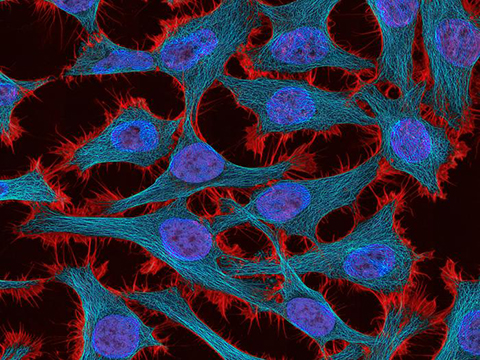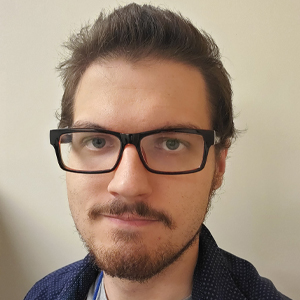AI harnesses tumor genetics to predict treatment response
In a groundbreaking study published on January 18, 2024, in Cancer Discovery, scientists at University of California San Diego School of Medicine leveraged a machine learning algorithm to tackle one of the biggest challenges facing cancer researchers: predicting when cancer will resist chemotherapy.
All cells, including cancer cells, rely on complex molecular machinery to replicate DNA as part of normal cell division. Most chemotherapies work by disrupting this DNA replication machinery in rapidly dividing tumor cells. While scientists recognize that a tumor's genetic composition heavily influences its specific drug response, the vast multitude of mutations found within tumors has made prediction of drug resistance a challenging prospect.

The new algorithm overcomes this barrier by exploring how numerous genetic mutations collectively influence a tumor's reaction to drugs that impede DNA replication. Specifically, they tested their model on cervical cancer tumors, successfully forecasting responses to cisplatin, one of the most common chemotherapy drugs. The model was able to identify tumors at most risk for treatment resistance and was also able to identify much of the underlying molecular machinery driving treatment resistance.
"Clinicians were previously aware of a few individual mutations that are associated with treatment resistance, but these isolated mutations tended to lack significant predictive value. The reason is that a much larger number of mutations can shape a tumor's treatment response than previously appreciated," Trey Ideker, PhD, professor in Department of Medicine at UC San Diego of Medicine, explained. "Artificial intelligence bridges that gap in our understanding, enabling us to analyze a complex array of thousands of mutations at once."
One of the challenges in understanding how tumors respond to drugs is the inherent complexity of DNA replication — a mechanism targeted by numerous cancer drugs.
“Hundreds of proteins work together in complex arrangements to replicate DNA," Ideker noted. "Mutations in any one part of this system can change how the entire tumor responds to chemotherapy.”
The researchers focused on the standard set of 718 genes commonly used in clinical genetic testing for cancer classification, using mutations within these genes as the initial input for their machine learning model. After training it with publicly accessible drug response data, the model pinpointed 41 molecular assemblies — groups of collaborating proteins — where genetic alterations influence drug efficacy.
“Cancer is a network-based disease driven by many interconnected components, but previous machine learning models for predicting treatment resistance don’t always reflect this,” said Ideker. "Rather than focusing on a single gene or protein, our model evaluates the broader biochemical networks vital for cancer survival."
After training their model, the researchers put it to the test in cervical cancer, in which roughly 35% of tumors persist after treatment. The model was able to accurately identify tumors that were susceptible to therapy, which were associated with improved patient outcomes. The model also effectively pinpointed tumors likely to resist treatment.
Further still, beyond forecasting treatment responses, the model helped shed light on its decision-making process by identifying the protein assemblies driving treatment resistance in cervical cancer. The researchers emphasize that this aspect of the model — the ability to interpret its reasoning — is key to the model’s success and also for building trustworthy AI systems.
"Unraveling an AI model's decision-making process is crucial, sometimes as important as the prediction itself," said Ideker. "Our model's transparency is one of its strengths, first because it builds trust in the model, and second because each of these molecular assemblies we’ve identified becomes a potential new target for chemotherapy. We’re optimistic that our model will have broad applications in not only enhancing current cancer treatment, but also in pioneering new ones."
This article was originally published on the UC San Diego website. You can read the original here.
Enjoy reading ASBMB Today?
Become a member to receive the print edition four times a year and the digital edition monthly.
Learn moreGet the latest from ASBMB Today
Enter your email address, and we’ll send you a weekly email with recent articles, interviews and more.
Latest in Science
Science highlights or most popular articles

Finding a symphony among complex molecules
MOSAIC scholar Stanna Dorn uses total synthesis to recreate rare bacterial natural products with potential therapeutic applications.

E-cigarettes drive irreversible lung damage via free radicals
E-cigarettes are often thought to be safer because they lack many of the carcinogens found in tobacco cigarettes. However, scientists recently found that exposure to e-cigarette vapor can cause severe, irreversible lung damage.

Using DNA barcodes to capture local biodiversity
Undergraduate at the University of California, Santa Barbara, leads citizen science initiative to engage the public in DNA barcoding to catalog local biodiversity, fostering community involvement in science.

Targeting Toxoplasma parasites and their protein accomplices
Researchers identify that a Toxoplasma gondii enzyme drives parasite's survival. Read more about this recent study from the Journal of Lipid Research.

Scavenger protein receptor aids the transport of lipoproteins
Scientists elucidated how two major splice variants of scavenger receptors affect cellular localization in endothelial cells. Read more about this recent study from the Journal of Lipid Research.

Fat cells are a culprit in osteoporosis
Scientists reveal that lipid transfer from bone marrow adipocytes to osteoblasts impairs bone formation by downregulating osteogenic proteins and inducing ferroptosis. Read more about this recent study from the Journal of Lipid Research.

